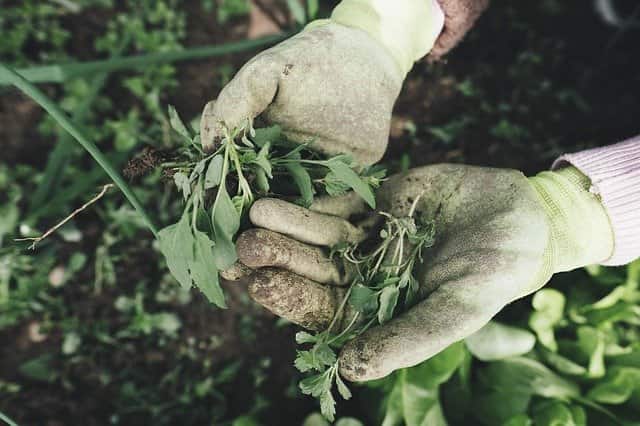If the summer is rainy and cool, this is bad for plants - pathogens actively multiply in such weather. And it is very important to provide timely preventive and protective measures. We tell you what work needs to be done in the garden after the rain
Diseases of fruit and berry crops
There are many diseases in fruit and berry crops, but there are three most dangerous.
Moniliosis
Summer residents have already faced a problem - cherries, plums, apricots have begun to dry out. Here are whole branches. This is moniliosis.Infection of the plant occurs during flowering - the spores of the pathogen fungus enter the plant through the pistil, germinate into the shoot and clog the vessels. As a result, the water ceases to flow into the affected branches and they dry out. It seems that the plant has burned with fire, which is why the disease is often called monilial burn.
Later, the disease affects the fruit - the spores get there through the punctures of insect pests. Dark spots appear on the skin, which quickly grows and merges into one large spot. As a result, the fruits shrivel and dry out.
What to do. Moniliosis is very difficult to treat. The first step is to cut out all the dried branches, and not only the affected part, but also the visually healthy one - about 10 - 15 cm. Sick shoots must be burned! Do not throw it over the fence, do not put it in compost, but send it to the fire. Otherwise, the disease will spread even more throughout the garden - the spores of the fungus are easily carried by wind and rain.
Affected fruits must also be torn off. And also burn.
In the fall, when the leaves fall off, scoop them up and burn them. Dig up the trunk circles and treat with 3% Bordeaux liquid.
Next spring, before the leaves bloom, treat the trees with a 1% solution of Bordeaux liquid.
Black cancer
This disease is also familiar to summer residents, and it is also similar to the consequences of a fire - the trunks and skeletal branches of trees turn black as if scorched by fire. Unfortunately, this disease is incurable, professional fruit growers are advised to remove such trees and burn them. But it's a pity! Moreover, the life of a tree affected by cancer can be significantly extended.What to do. First of all, whitewash the trunks and skeletal branches with special garden paint, to which add copper sulfate. Yes, yes, you need to whitewash right now, without waiting for autumn.
Collect the carrion as quickly as possible during the summer - black cancer affects the fruit too.
Rake and burn all the leaves in the fall. And treat the trees with a strong, 10% solution of potassium chloride.
Next spring, before flowering, apply fertilizers with boron and magnesium under the trees - these trace elements increase the resistance of fruit crops to black crayfish. And after flowering, treat the plants with 1% Bordeaux liquid.
Scab
Another scourge of fruit crops. Apple and pear trees are especially affected by scab. In apple trees, the disease most often manifests itself on the fruits - they are covered with black dots. And in pears, shoots also suffer (the tops turn black) and leaves (black spots appear on them).What to do. In pears, the affected ends of the branches should be cut off. And then apples and pears must be treated with Abiga-Peak or HOM preparations according to the instructions.
It is better to collect the carrion on a daily basis so that spores from the affected fruits do not fall back on the trees.
In the fall, it is necessary to collect and burn the leaves - the causative agent of the disease often hibernates on them. And then treat the soil in the near-trunk circles with a 5% urea solution (500 g per 10 l of water).
Next spring, before the buds have blossomed, it is important to treat the trees with a 3% Bordeaux liquid.
Diseases of vegetable crops
After this early summer, vegetables are also at risk of getting sick. Tomatoes, cucumbers, and potatoes will be the worst. Therefore, the main attention should be paid to them.Phytophthora
This is the main problem with nightshade crops. Tomatoes and potatoes are the ones that suffer the most from it. Moreover, the disease is getting younger every year - in the old days it affected plants towards the end of summer, and now outbreaks of the disease often begin in early July. It is difficult to treat phytophthora, it is better to prevent it.What to do. In tomatoes, cut off all the leaves below the first brush - so the bushes will be better ventilated, dry faster after rains and the risk of illness will significantly decrease.
Loosen the soil under the potatoes as often as possible - it will dry out faster after rains. And the less dampness, the fewer chances of pathogenic fungi.
But the main thing that needs to be done is to mulch the beds with hay. This is the best prevention of not only late blight but also other diseases.
Firstly, hay will exclude the contact of the soil with the tops. Phytophthora spores are in the ground, and after each rain, after each watering, together with soil particles, they fall on the leaves and shoots. And the mushroom begins to multiply actively. Hay will eliminate this problem.
Secondly, a useful bacterium lives in the hay - hay bacillus. It secretes the natural antibiotic subtillin, which inhibits the development of pathogenic fungi, the very pathogens. The longer the hay is in the beds, the more of these bacteria. If there is no hay, it's not scary, you can pick up ordinary grass and mulch the beds with it - in a few days, it will turn into hay itself.
By the way, this mulch will help you save time on weeding - if you put it in a layer of 10 cm, annual weeds will not be able to break through such a thickness.
Downy mildew
It affects cucumbers and is familiar to every summer resident - this is the very attack when the whips, in the midst of fruiting, begin to turn yellow and dry. It is useless to fight it, besides, many drugs that can contain the disease have a decomposition time of 30 days. That is, it is impossible to harvest earlier. And cucumbers give a harvest very quickly.What to do. The only way to extend the season for cucumbers is to sow them at different times. Early varieties ripen for about 40 days, therefore, seeds can be sown until the end of July. For example, with an interval of 2 weeks. And just pull out and burn the drying lashes.
It is useful to treat the soil after cucumbers with copper sulfate: 3 tbsp. spoons for 10 liters of water.
And, by the way, it is also useful to mulch cucumbers with hay - hay bacillus is universal, it inhibits the development of many pathogens, including the causative agent of downy mildew.
Folk trick
All plants in the garden and vegetable garden can be additionally sprayed with an infusion of rotten hay - it also contains a haystack. The hay should be old, worn out, but free of mold. And it is better from cereal grasses.First, you need to prepare a mother liquor: 2 kg of hay, pour 10 liters of water, add 5 tbsp. spoons of lime or chalk, boil for 10 minutes, and remove in a dark, warm place with a temperature of 25 - 30 ° C. After three days, the infusion will be ready.
Spray the plants with this infusion once a week. But it is important that it is freshly prepared.

